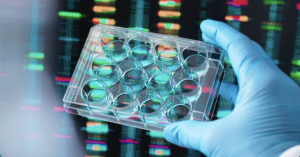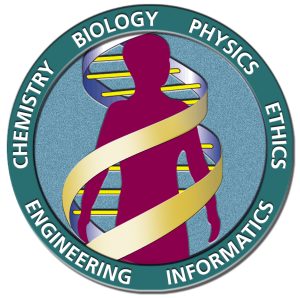The Human Genome Project (HGP) transformed biology and was one of the great feats of exploration in history. Rather than an outward exploration of the cosmos around us, the Human Genome Project was an international collaboration that turned inwards to successfully sequence and map all of the genes — together known as the genome — of members of our species, Homo sapiens. Not only that, but the project exemplified the power and necessity of large, integrated, cross-disciplinary efforts that just encouraged more international collaboration. The HGP had impacted not only the field of medicine and biology, but impacted society as a whole.
What is a Genome?
To start off, a genome is an organism’s complete set of deoxyribonucleic acid (DNA), a chemical compound that contains the genetic instructions needed to develop and direct the activities of every organism. Each strand of DNA then contains four chemical units, called nucleotide bases. The bases are adenine (A), thymine (T), guanine (G), and cytosine (C). However, in order to understand what exactly each segment of DNA does, scientists have to know the order these base pairs come in, which is where DNA sequencing comes in. DNA sequencing is the process used to determine the exact sequence of bases in a DNA molecule, and the importance of such a process will be highlighted with the Human Genome Project.
What were the goals?
The main purposes of the Human Genome Project were first created in 1988 by a special committee of the U.S. National Academy of Sciences, and later adopted through a detailed series of five-year plans jointly written by the National Institutes of Health and the Department of Energy. The HGP goals were to read and record the genetic instructions contained within the human genome and provide that information to researchers worldwide freely and without restriction. They also aimed to create physical and genetic maps of the human genome, which were accomplished in the mid-1990s, as well as the mapping and sequencing of a set of five model organisms, including the mouse and fruit fly. They did this using DNA sequencing and all of these goals were achieved within the time frame and budget first estimated by the NAS committee. Beginning on October 1, 1990, and completed in April 2003, the project gave humans the ability, for the first time, to properly read nature’s fully complete genetic blueprint for a human being.
What were the impacts?
Since the Human Genome Project made its information on the complete human genome sequence public, it represented a defining moment for both the biomedical community and human society. The HGP developed new tools to obtain and analyze genomic data that are used beyond the project to help benefit many areas of biology. The project gave the science world the equivalent of having all the pages of a manual on how to make the human body, and now researchers have been given the task of reading all of those pages and then understanding how the parts work together to discover the genetic basis for health and the pathology of human disease. In this respect, it carved the way for medical science to be able to develop more effective diagnostic tools. The biomedical field can also better understand the health needs of people based on their individual genetic makeup, and perhaps even design new and effective preemptive treatments for disease.
Additionally, the project gave rise to many more social and ethical implications that have changed the science world. Biological research had always traditionally been a very individualistic enterprise, with research going after medical investigations more or less independently. However, the sheer magnitude of both the financial investment and the technological challenge prompted the HGP to assemble interdisciplinary teams, encompassing engineering, informatics, and biology; automate procedures wherever possible, and concentrate research in major centers to maximize economies of scale. As a result, further research involving other genome-related projects (such as the International HapMap Project to study human genetic variation and the Encyclopedia of DNA Elements, or ENCODE, project) is now characterized by massive, cooperative efforts involving many different international institutions.
Those involved in the project also encouraged public debate and provided the public information about the ethical, social, and legal implications of looking inside the human genome. Those committed to exploring this field specifically do so through the Ethical, Legal, and Social Implications (ELSI) program, where the program provides an effective basis from which to assess the implications of genome research.
Everything is theoretically impossible until it is done.
– Robert A. Heinlein
The Human Genome Project led to unprecedented advancements in human understanding of the genome, and it opened many avenues in biology, medicine, technology, and computation that we are just beginning to explore. It also, however, let to many more biological questions for scientists to take on as well as social and ethical issues for us all to consider.


